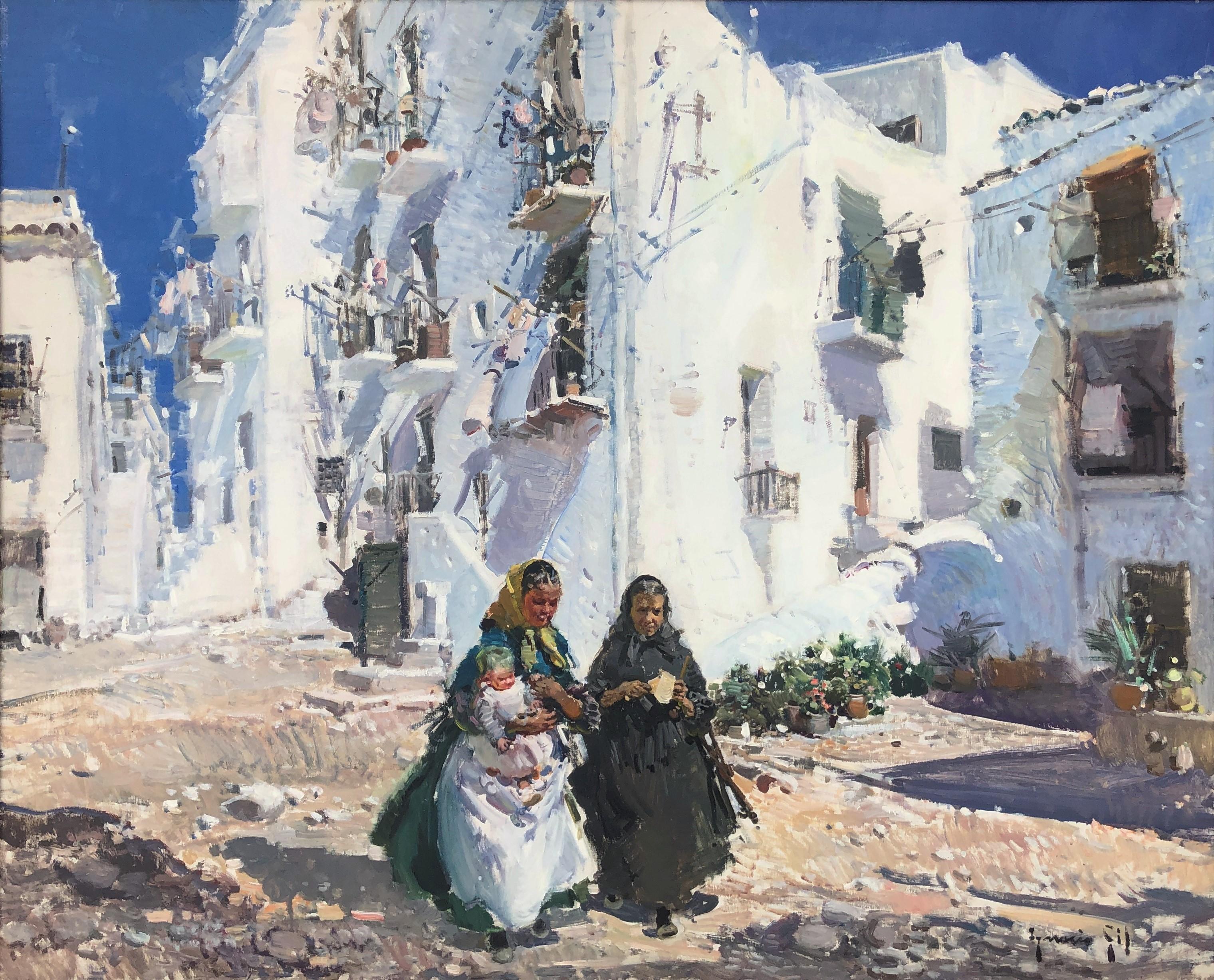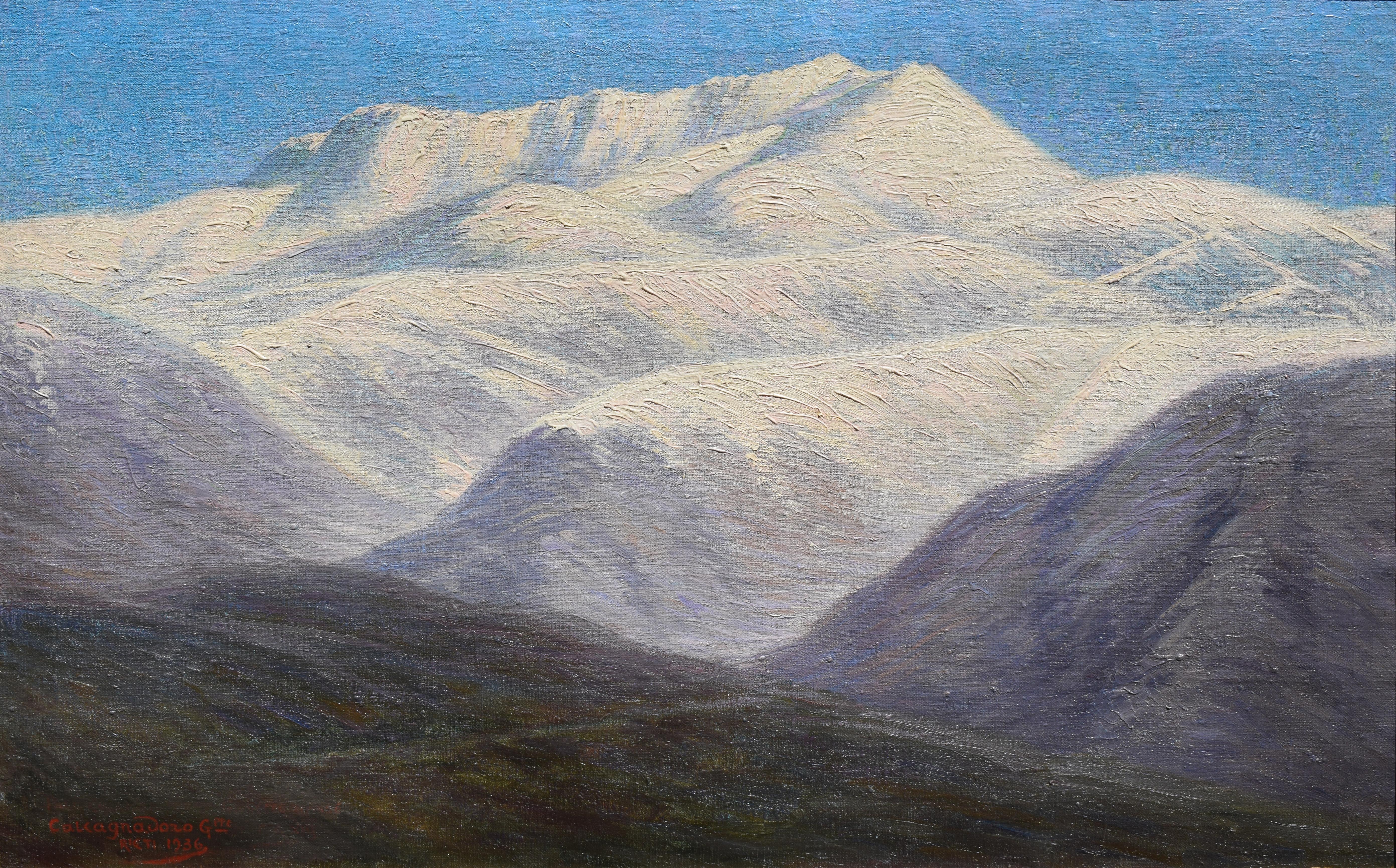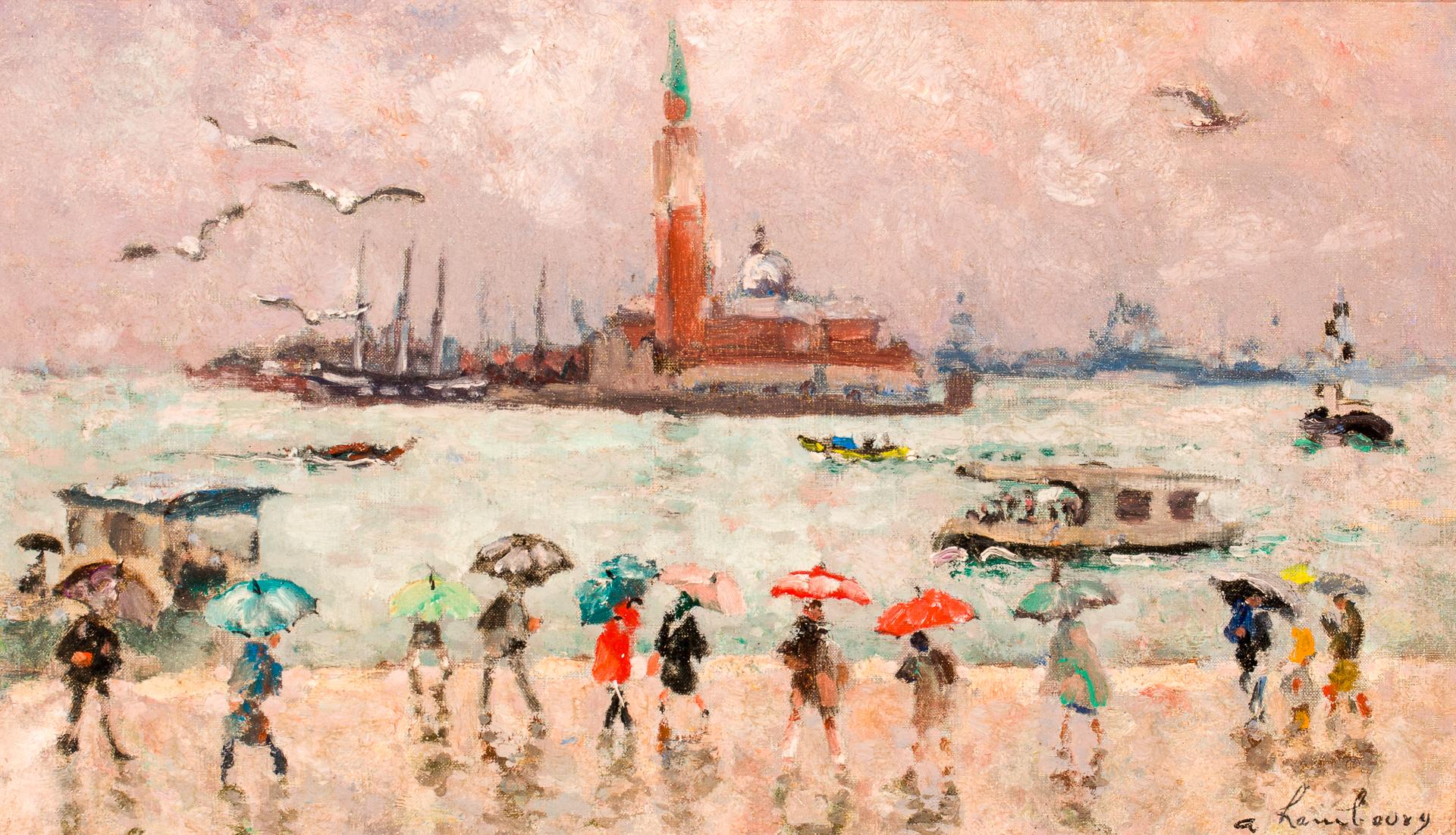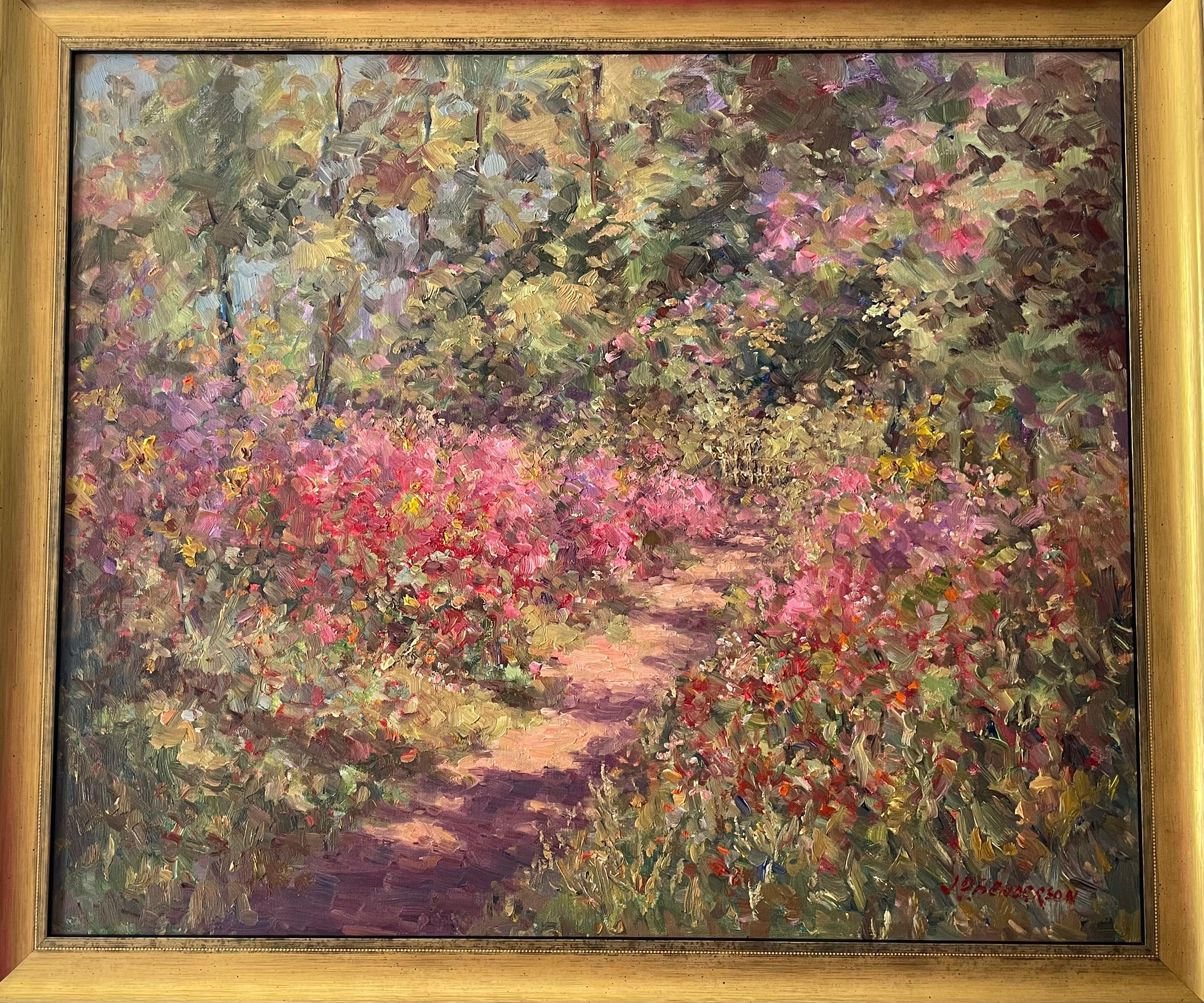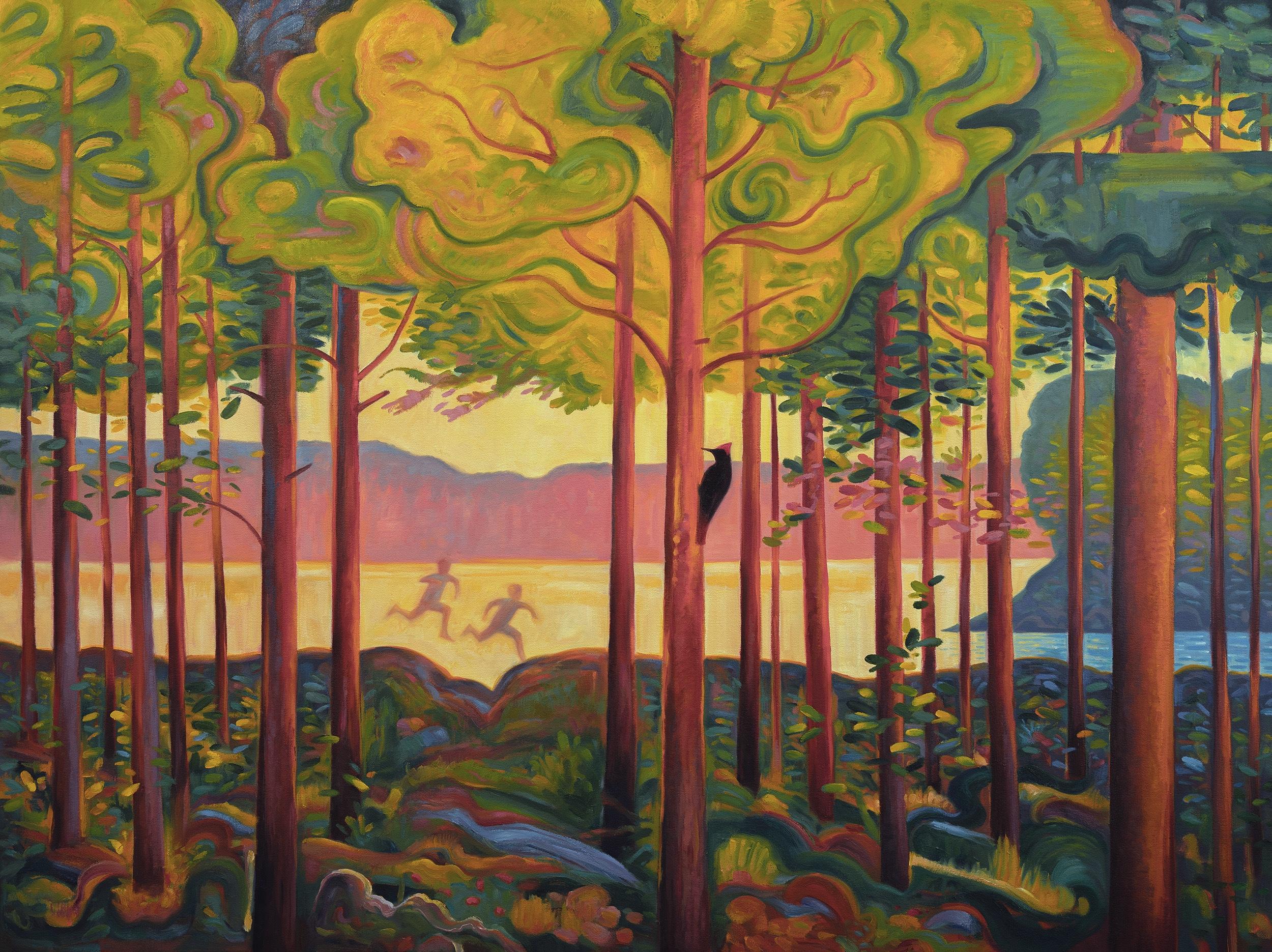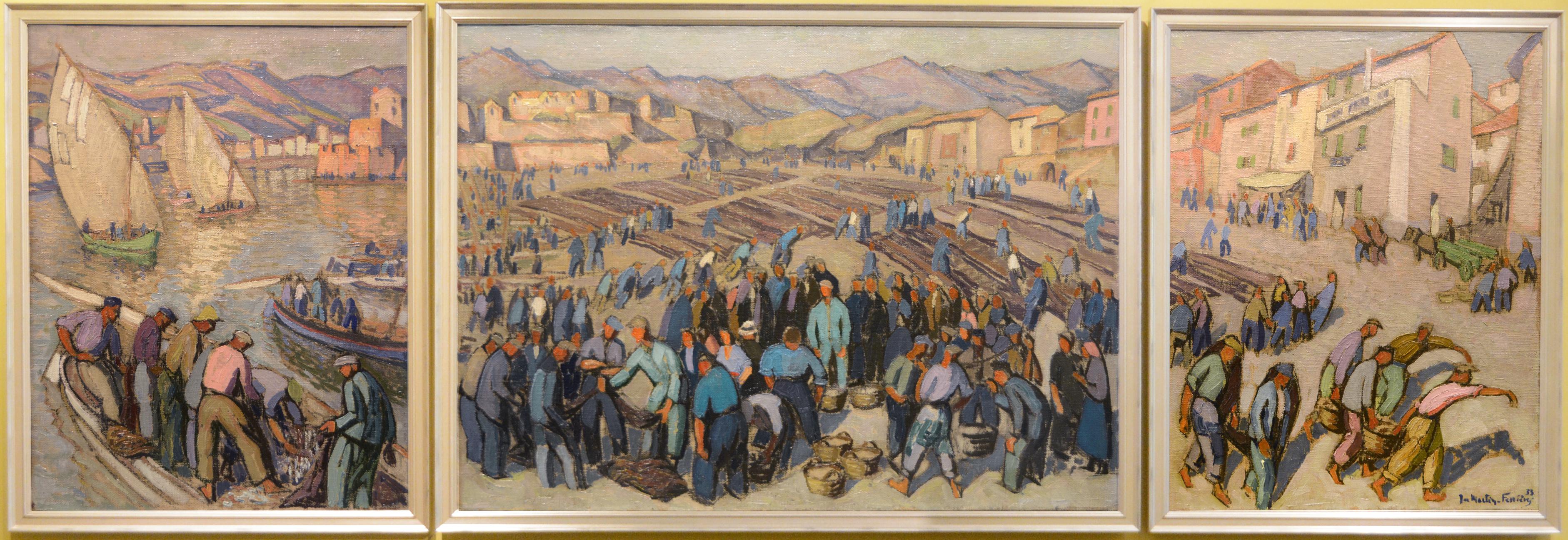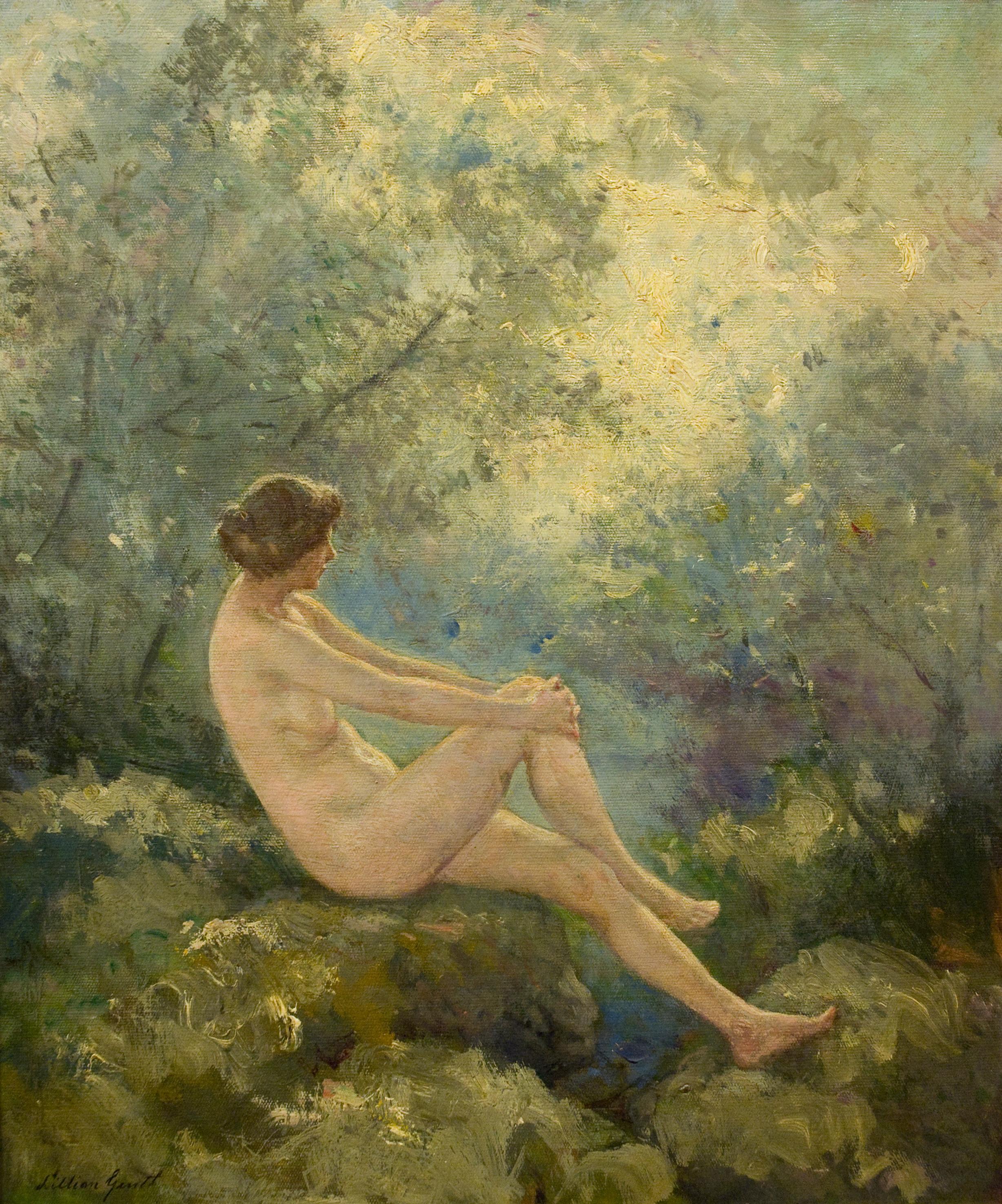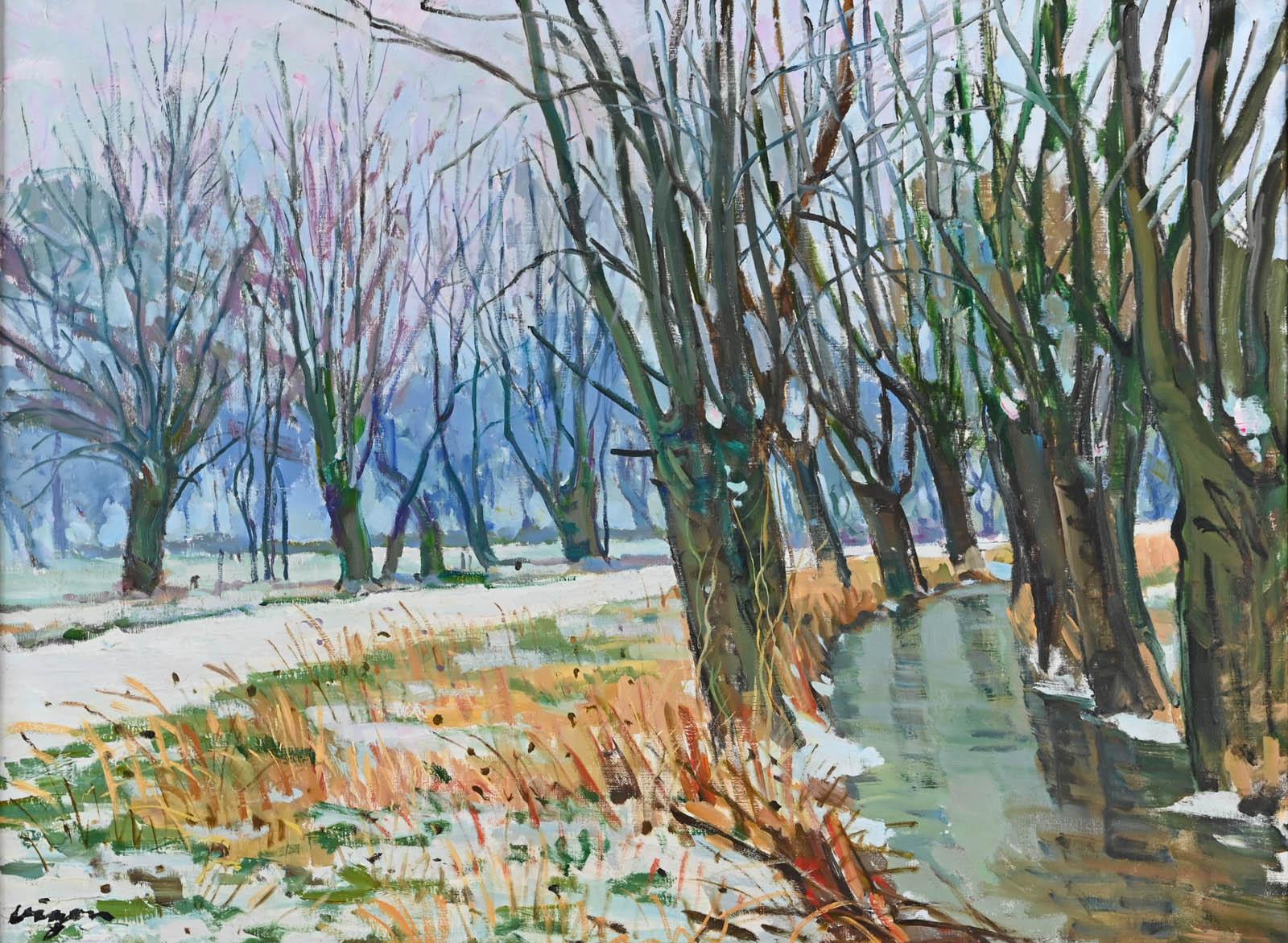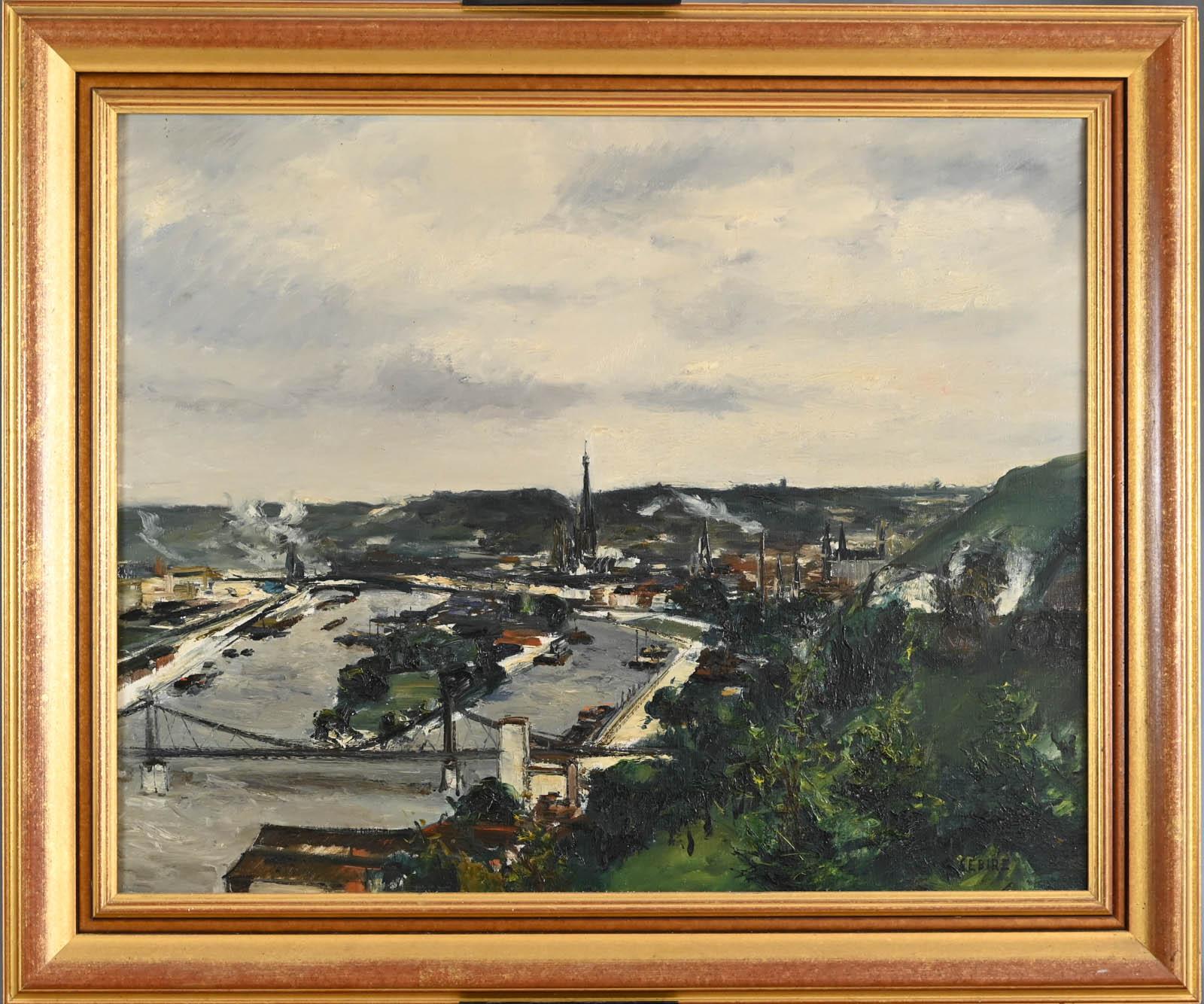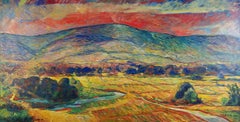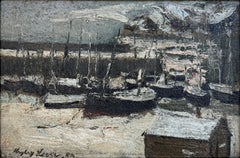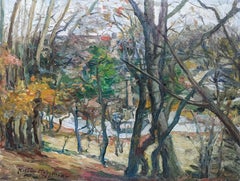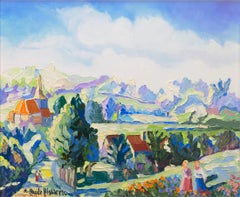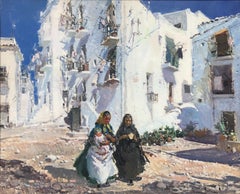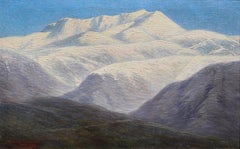"Boulevard de la Madeleine, " Antoine Blanchard, Paris French Street Scene
View Similar Items
Want more images or videos?
Request additional images or videos from the seller
1 of 9
Antoine Blanchard"Boulevard de la Madeleine, " Antoine Blanchard, Paris French Street Scene
$8,000List Price
About the Item
- Creator:Antoine Blanchard (1910-1988, French)
- Dimensions:Height: 21 in (53.34 cm)Width: 26 in (66.04 cm)
- Medium:
- Movement & Style:
- Period:
- Condition:
- Gallery Location:New York, NY
- Reference Number:1stDibs: LU184129924442
Antoine Blanchard
Antoine Blanchard (1910-1988) was a French oil painter renowned for his impressionist cityscapes of beautiful Paris.
About the Seller
5.0
Platinum Seller
Premium sellers with a 4.7+ rating and 24-hour response times
Established in 2022
1stDibs seller since 2022
115 sales on 1stDibs
Authenticity Guarantee
In the unlikely event there’s an issue with an item’s authenticity, contact us within 1 year for a full refund. DetailsMoney-Back Guarantee
If your item is not as described, is damaged in transit, or does not arrive, contact us within 7 days for a full refund. Details24-Hour Cancellation
You have a 24-hour grace period in which to reconsider your purchase, with no questions asked.Vetted Professional Sellers
Our world-class sellers must adhere to strict standards for service and quality, maintaining the integrity of our listings.Price-Match Guarantee
If you find that a seller listed the same item for a lower price elsewhere, we’ll match it.Trusted Global Delivery
Our best-in-class carrier network provides specialized shipping options worldwide, including custom delivery.More From This Seller
View All"Berkshire Hills, Massachusetts, " Paul Greene, Bright Large New England Scene
Located in New York, NY
Paul Greene (1925 - 2020)
Berkshire Hills Landscape, Massachusetts
Oil on canvas
50 x 97 inches
Signed lower right
Provenance:
Private Collection, Great Barrington...
Category
Late 20th Century Fauvist Landscape Paintings
Materials
Canvas, Oil, Acrylic
$24,000 Sale Price
20% Off
"Late Summer" Carl Wuermer, Pointilism, American Impressionism August Landscape
By Carl Wuermer
Located in New York, NY
Carl Wuermer (1900 - 1981)
Late Summer, 1924
Oil on canvas
26 x 28 inches
Signed and dated lower right
Provenance:
McColl Fine Art, North Carolina
Known for serene, realistic lands...
Category
1920s Pointillist Landscape Paintings
Materials
Canvas, Oil
"Winter in St. Ives" Hayley Lever, Post-Impressionist, Thick Impasto Snowy Scene
By Hayley Lever
Located in New York, NY
Hayley Lever
Winter in St. Ives
Signed lower left
Oil on canvas
8 1/2 x 11 1/4 inches
Hayley Lever’s versatility has worked against his posthumous reputation. He was never associat...
Category
Early 1900s Post-Impressionist Landscape Paintings
Materials
Canvas, Oil
"Prospect Park, Brooklyn, " Nathan Hoffman, New York City Impressionist Landscap
Located in New York, NY
Born in Russia, the son of Friede (1878 – 1956) and Benjamin Hoffman (1878 – a. 1942). Benjamin was a dealer in mineral and seltzer water and the family resided on Snediker Avenue in Brooklyn, New York, just down the streetfrom the home where George Gershwin (1898 – 1937) was born.
This area of Brooklyn, known as Brownsville, “witnessed the development of one of the largest communities of Eastern European Jewish immigrants during the last decade of the 19th century and the first two decades of the 20 th century.” Today, little remains of this once thriving Jewish section of Brooklyn, which today houses many commercial and repair businesses.
Hoffman studied at the Art Students League of New York, the National Academy of Design and in the art program at Cooper Union. His work at the National Academy received praise, and in 1921 he was awarded the 2nd prize and an honorable mention from the John Armstrong Chaloner Paris Prize Foundation at the National Academy, which allowed the recipient to study in Paris, France for as long as five years. The following year he was awarded the 1 st prize in the competition (with The Reform Advocate running the headline “Young Jew Wins Art Prize”) as well as the Suydam Bronze Medal for his achievements in the Academy’s Men’s Night Class. In 1923 he was residing in Long Branch, New Jersey, when he was awarded 4th place in the Chaloner competition.
Early on, Hoffman exhibited his work throughout the city, including in 1925 with the recently organized Society of Independent Artists. He also received several solo exhibitions during the first part of his career, including one at Ferargil Galleries in 1929. In the spring of 1930 a solo exhibition of his portraits, including paintings and drawings, was held at at Babcock Galleries, where a reviewer noted: “Portraiture is obviously Mr. Hoffman’s specialty… his best work is characterized by a sensitive appreciation of character set down in a vigorous decisive statement.
Later that same year, in August, he participated in Babcock’s summer exhibition where reviewer Jerome Klein, writing for The Baltimore Sun, felt Hoffman’s and other artists work was already becoming old fashioned, remarking “…if an effort toward accomplishment is to be made, it must be in the language of today. It is for that reason that such contemporaries as Eugene Higgins and Nathan Hoffman, in this show, seem artists of a bygone era…” The onset of the Great Depression appears to have slowed his success, as was the case for many up-and-coming artists.
By 1939 Hoffman had become a gallerist in addition to being a painter, operating the collective exhibition space “Sutton Gallery,” which was originally located at 358 East 57th Street. There Hoffman exhibited his own works as well as those created by other prominent New York artists including David Burliuk (1882 – 1967), Charles C. Curran (1861 – 1942), Louis Eilshemius (1864 – 1941), Ann Goldthwaite (1869 – 1944), Maurice Kish (1895 – 1987), Lawrence Lebduska (1894 – 1966), Bradford Perin and Ellis Wilson...
Category
1940s Post-Impressionist Landscape Paintings
Materials
Oil, Board
"Gondolas at the Dock, Venice, Italy" Louis Wolchonok, Boats in the Harbor Scene
By Louis Wolchonok
Located in New York, NY
Louis Wolchonok (1898 - 1973)
Gondolas at the Dock, Venice, Italy, 1928
Watercolor on paper
Sight 18 x 23 1/2 inches
Signed and dated lower right
Louis Wolchonok was an author of ar...
Category
1920s Post-Impressionist Landscape Drawings and Watercolors
Materials
Paper, Watercolor
"Mount Rockwell, Glacier National Park, Montana, " Mountain Lake Landscape View
By Charles Warren Eaton
Located in New York, NY
Charles Warren Eaton (1857 – 1937)
The Shadow of Mount Rockwell, Glacier National Park, Montana, 1921
Oil on canvas
20 x 24 inches
Signed lower right: CHAS WARREN EATON.
Provenance:
The artist
The Macbeth Gallery, New York
Private Collection
Sotheby's New York, American Art, April 14, 1989
ConocoPhillips, Houston
Simpson Galleries, Houston, Fine Art & Antiques, May 18, 2019, Lot 447
Exhibited:
New York, The Macbeth Gallery, Paintings of Glacier National Park by Charles Warren Eaton, December 13, 1921 - January 2, 1922, no. 2.
Literature:
"Two Exhibitions at Macbeth's," American Art News, New York, Vol. XX, No. 10, December 17, 1921.
A contemporary critic wrote that the paintings of Charles Warren Eaton appeal to “the dreamers who find in them the undiscovered scenes in which their fancy long has dwelt.” Eaton’s contemplative landscapes exude a spiritual quality that moves the observer into a similar frame of mind. He loved to depict the ethereal light of dawn and dusk in late autumn or winter, usually without any reference to human or animal figures or buildings. These Tonalist paintings, with their subdued palette and relatively intimate scale, marked a definite break with the fading popularity of the panoramic and romantic views of the Hudson River School painters.
Charles Warren Eaton was born in Albany, New York to a family of limited means. He began painting while working in a dry-goods store. At age 22, he enrolled at the National Academy of Design in New York City and then studied figure painting at the Art Students League. By 1886, he was successful enough to quit his day job and make a living as a landscape painter. That year, he traveled to Europe with fellow Tonalist painters Leonard Ochtman and Ben Foster. In France, Eaton visited popular artist’s spots such as Paris, Fontainebleau and Grez-sur-Loing, and fell in love with the loose brushwork and moody style of French Barbizon painting.
Returning to the United States, Eaton fell under the spell of George Inness, the foremost exponent of Barbizon style in the United States. In 1888, Eaton settled near Inness in Bloomfield, New Jersey, where Eaton lived until his death in 1937. In this period, he painted shadowy and ambiguous landscapes inspired by rural scenery in the northeastern United States. His signature theme was a cropped view of the branches, trunks, and foliage of a pine grove silhouetted against a delicately illuminated sunset or moonlit sky. He painted this vision so often between 1900 and 1910 that he picked up the sobriquet ‘‘The Pine Tree Painter.”
After 1910, Eaton responded to the popularity of Impressionism by using brighter colors and painting sunlit daytime scenes. In 1921, he was hired to paint Glacier Lake, in Glacier National Park by the Great Northern Railroad Company as part of their ‘See America First’ campaign. He produced more than 20 paintings, among the artist's last works, that now poignantly remind viewers of the vast disappearing glaciers. Eaton tended to approach this mountain scenery from an oblique vantage point; he liked to capture small episodes, showing mountaintops nearly obscured by dramatically attenuated screens of fir trees.
Eaton, like many Tonalist artists of his generation such as Henry Ward Ranger, John Francis Murphy, and Charles Melville Dewey...
Category
1920s Tonalist Landscape Paintings
Materials
Canvas, Paint, Oil
You May Also Like
Le manoir de Miette au Vey by H. Claude Pissarro
By Hughes Claude Pissarro
Located in New Orleans, LA
Hugues Claude Pissarro
b. 1935 French
Le manoir de Miette au Vey
(Miette's Manor in Vey)
Signed “H. Claude Pissarro” (lower left)
Oil on canvas
H. Claude Pissarro masterfully cap...
Category
20th Century Post-Impressionist Landscape Paintings
Materials
Canvas, Oil
Cadaques oil painting Spain spanish mediterranean european landscape
By Rafael Duran Benet
Located in Barcelona, Barcelona
**Technical Sheet**
Title: Cadaqués
Artist: Rafael Durán Benet (Terrassa, 1931 - Barcelona, 2015)
Technique: Oil on canvas board
Dimensions: 13 x 16 inches (33 x 41 cm)
Year: Un...
Category
1980s Post-Impressionist Landscape Paintings
Materials
Canvas, Cardboard, Oil
Maternity and white houses Ibiza Spain oil on canvas painting
By Ignacio Gil Sala
Located in Barcelona, Barcelona
Frame size 91x110 cm.
Ignacio Gil Sala, was a painter, bohemian character, adventurous and intrepid traveler who knew how to capture his eyes to that worl...
Category
1990s Post-Impressionist Landscape Paintings
Materials
Oil, Canvas
$5,660 Sale Price
46% Off
The Terminillo
Located in Roma, RM
Giuseppe Calcagnadoro (Rieti 1883 - 1937), The Terminillo
Oil painting on canvas 60 x 91 cm signed and dated Rieti 1936 lower left.
Category
Early 20th Century Post-Impressionist Landscape Paintings
Materials
Oil, Canvas
Pluie a Venice (Venice in the Rain)
By André Hambourg
Located in Costa Mesa, CA
Pluie a Venice is painted in Hambourg's preferred palette of muted blue-green, grey, and gold with splashes of ruby red, deep blue, and emerald green. The soft colors work well for beach scenes and rainy days such as the ones portrayed in this painting. The impressionistic scene shows multiple pedestrians strolling down the boardwalk, shielding themselves from the rain with colorful umbrellas that provide pops of color and balance the overcast sky.
The background contains a three-masted ship and Piazza San Marco's famous bell tower and Basilica. Hambourg uses the minimum number of brushstrokes necessary to portray ships, seagulls, buildings and people as well as reflections on the glistening sidewalk. The brushstrokes in the sky have an interesting texture that is controlled yet carefree and there is heavy impasto throughout. His portrayal is both realistic and romanticized.
Hambourg was clearly influenced by the great Impressionist artists of earlier generations, perhaps none more than the one with a direct connection to his family. Hambourg's wife, Nicole Rachet, was born into a family with a large collection of works by Impressionist master Eugene Boudin. Rachet's grandfather was a contemporary and friend of Boudin's, and a collector of his work. In their later years, Hambourg and Rachet donated over 300 canvases by Boudin and other artists to the Eugene Boudin Museum in Honfleur, France. It was such a large and important gift that the collection bears...
Category
1960s Post-Impressionist Landscape Paintings
Materials
Canvas, Oil
Sunlit Path
By JD Henderson
Located in Hillsborough, NC
Impressionist/Post impressionist style painting 'Sunlit Path' by Scottish contemporary artist JD Henderson, gives us this country garden scene dated 1999 (verso), signed by the artis...
Category
1990s Post-Impressionist Landscape Paintings
Materials
Canvas, Oil
$2,200 Sale Price
20% Off
Recently Viewed
View AllMore Ways To Browse
Les Grands Boulevards
Horse Lighter
Notre Dame De Paris Painting 1950s
Marcel Masson
Vintage Horse Lighter
Cafe De La Paix
Horse Drawn Carriage Model
Ruth Armer
Salinas Bluebonnets
Stanford Antiques
Susan Porter
Usa Xxx
V Vaughan Painting
Vintage Fence Wire
Virginia Lynn
Wildlife Paintings Ducks
Aizpiri Paul
Ann Bell

